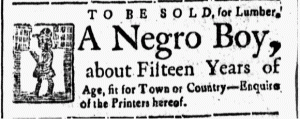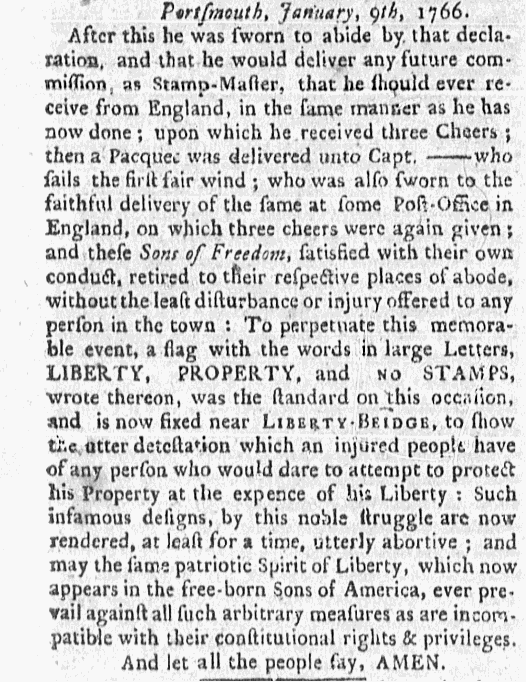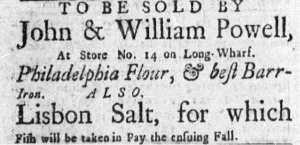Mary Aldrich has completed her second and final week as guest curator for the Adverts 250 Project. As we say farewell to her, let’s take a few moments to find out more about her behind-the-scenes contributions to this project.
Adverts 250: This was your second week as guest curator. How did it compare to the first time? Did you make any changes to your research or writing process based on what you learned the first time?
Mary Aldrich: This time around as guest curator, I had a good process worked out from the previous week, which made the entire project easier. Looking for advertisements was slightly more difficult this time because I wanted to try to find a theme that loosely tied all, or most, of them together. Fortunately, I was able to find a few advertisements that mentioned their location. Their location happened to be politically important, which was a bonus. It made me realize the how layered many of the advertisements from this period are. I did try to research some of the more obscure aspects of the advertisements in order to gain a better understanding of the content of the advertisement that I could add into my commentary if need be. By doing this extra research I was able to gain a broader understanding of what was important to people of the 1760s and why.
Adverts 250: What is the most important or most interesting thing that you learned about early American history throughout the process of working on this project?
Mary Aldrich: This project has made me realize the importance of everyday items and how they may be used by future generations in order to piece together what life was like during the period the items are from. Life in early America consisted of many aspects that at first glance may not be immediately identifiable. Looking through advertisements a second week has given me new insights into different aspects of early American life that I had not noticed in the first week of working on this project. Rather than learning about early American life from a textbook, I feel as if I have connected to a past in a different way that is more meaningful. While looking for advertisements one cannot help but read some of the other content in the newspapers and regular people had bits of their story in the newspapers. This connected me to the past in a way that no textbook or an account about a historical person or event could.
Adverts 250: What is the most important thing you learned about “doing history” as a result of working on this project?
Mary Aldrich: Through this project, I learned that it is important to not just learn history but to actually “do history.” It is not enough to personally gain knowledge about history, history needs to be shared and any knowledge obtained through working with different historical objects needs to be shared with as many people as possible. “Doing history” involves a community and on the Adverts 250 Project, the community keeps growing. I also learned that creating a community takes time and patience. By obtaining different perspectives, the conversation can often move in a different, yet equally productive, direction. It is important to write and research not just for your audience but also for yourself. When I am interested in a subject, I tend to allow my enthusiasm to color the way I write and those reading it often notice that. This also makes researching and writing feel more fulfilling because you know those reading the finished product will, hopefully, relate to your enthusiasm and get excited about it themselves.
Adverts 250: What is your favorite advertisement from your two weeks as guest curator? Why?
Mary Aldrich: I really enjoyed researching the advertisement from the New Hampshire Gazette published on March 28, 1766 featuring goods from Barnabas Clark. Researching the Liberty Bridge mentioned in the advertisement and the Liberty Pole that was mentioned was very interesting. I mentioned that I visit Portsmouth almost every year and I have seen the Liberty Pole but I never connected it to the American Revolution or the Stamp Act protests. I never evn realized that there were protests in Portsmouth. I felt connected to this particular advertisement more than any of the others because I was familiar with an aspect of the advertisement. While I had a general idea about things that were mentioned in other advertisements, for this one I had actually passed the Liberty Pole and I have the opportunity to go back and view it in a new light. With the other advertisements, I do not have that same opportunity or prior knowledge.
**********
Thank you, Mary. You made some significant contributions to this project during your time as guest curator. Mary will be graduating from Assumption College with a degree in History in just over a month. Best wishes and good luck!
















